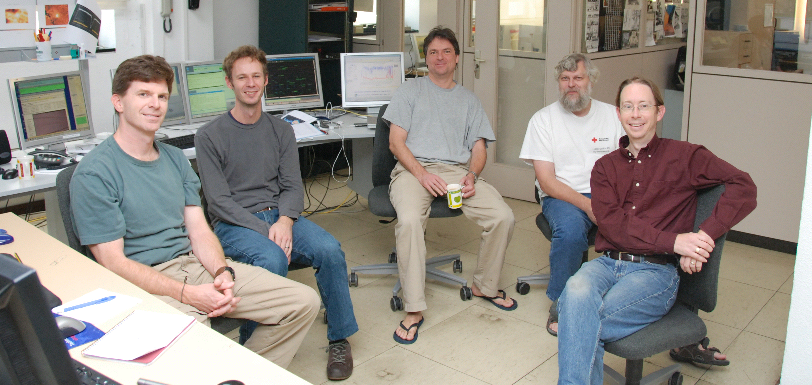GISMO run #2 (October 2008)
In October 2008, the GISMO team Johannes Staguhn, Stephen Maher, Elmer Sharp, Dale Fixsen, and Dominic Benford spent two weeks at the 30m observatory to first install their GISMO bolometer in the lab and then in the receiver cabin to test its performance on the sky. GISMO consists of 8x16 pixels with transition edge sensors (TES). The super conducting TES are read out by SQUID multiplexers. The nominal bandwidth is 125-175GHz, pixels are spaced by 14", the telescope HPBW is 17" at 2mm. Data are taken while the telescope is performing Lissajous scan patterns, without switching the secondary, to increase the mapping efficiency. An automated pipeline merges the GISMO data with the telescope data streams to create FITS files, being triggered by the IRAM messaging system. Data are then further reduced using the Goddard data reduction package.
The 2mm spectral range provides a unique terrestrial window enabling ground-based observations of the earliest active dusty galaxies in the universe and thereby allowing a better constraint on the star formation rate in these objects. Preliminary results from this second observing run at the 30m telescope look very promising.
(CK, 28-Oct-2008)

The GISMO team in the control room at the 30m telescope, after one week of 24 hours observing time. From left to right: Stephen Maher, Elmer Sharp, Johannes Staguhn, Dale Fixsen, Dominic Benford (Photo by A.Sievers on October, 27, 2008)
